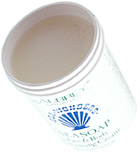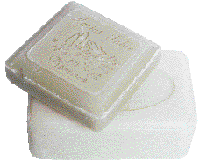DISH
Soapmaking began in around 2,800 B.C. when an enterprising Babylonian mixed animal and vegetable fats with plant ashes. Today, designer soaps, which make up 5-10% of the $1.6 billion soap industry, can contain everything from oatmeal bits to exotic mud.
Are specialty soaps really better than off-the-shelf brands?


Oily skin should reconsider using harsh soap because many soaps contain lards or fats that can block pores. In a controlled study, the number of pimples increased among the group using conventional soap, rather than, say, a "cleansing bar".
Among soaps, the harshest are Zest and Camay, while the least irritating to
the skin are Dove, Purpose and AveenoBar. For oilier skin, try
Neutrogena Cleansing Bar Oily Skin Formula.
Acne soaps: Used correctly, can reduce breakouts.
Castile soaps: It is milder because it uses olive oil as main fat but many castile soaps contain other irritants.
Deodorant soaps: The antibacterial agents help reduce body odor but has high pH levels that can be too harsh.
Facial bar: Just smaller than a bath bar.
French milled soaps: Additives to reduce alkalinity helps, and they do not dissolve as quickly.
Natural soaps: Vitamin E and aloe vera do not make better soap.
Oatmeal soaps: Sounds wholesome, but depends on other ingredients.
Superfatted soaps: May contain hydrating elements like lanolin and parafin.
Transparent soaps: Usually milder but may clog pores for those who are acne-prone. These are also softer soaps. Always read ingredients.
